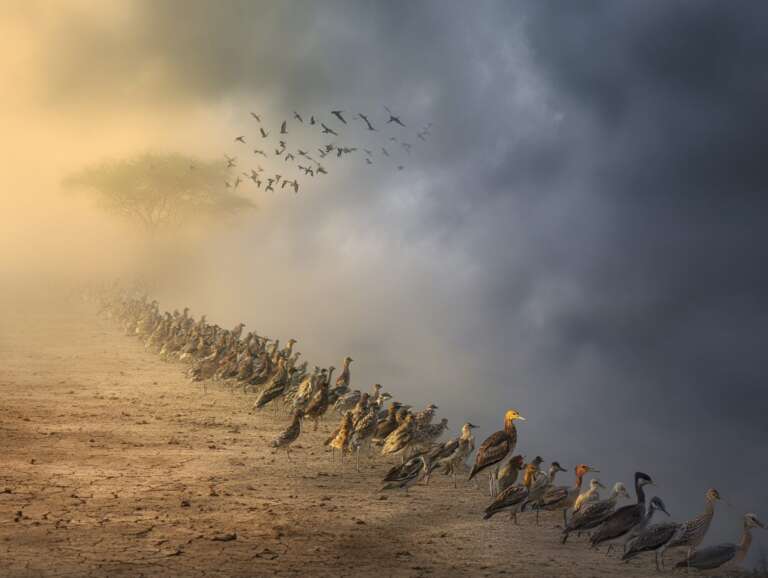How is climate change reshaping the skies for migratory birds? The truth is, it’s a game-changer. As our planet warms, the delicate balance of ecosystems is thrown into disarray, and avian species are among the first to feel the impact. From altered weather patterns to habitat loss and shifting food availability, the consequences are profound. This article dives deep into how climate change is influencing bird migration, revealing not just the fate of these winged travelers but also the broader implications for biodiversity and our environment.
TL;DR: Climate change is causing significant shifts in traditional bird migration patterns due to rising temperatures, habitat loss, and food scarcity. Understanding these changes is crucial for effective conservation efforts.
Understanding Bird Migration: The Basics
Bird migration isn’t just a fascinating spectacle; it’s a survival strategy. Defined as the seasonal movement of birds between breeding and wintering grounds, migration is crucial for species survival. Think of the Arctic Tern, which travels an astonishing 44,000 miles annually, or the American Robin, which migrates shorter distances but still relies on seasonal cues to navigate.
These migratory routes are often dictated by seasonal changes—temperature, daylight, and food availability. However, here’s the brutal truth: climate change is disrupting these patterns. As temperatures rise, the timing of seasonal changes shifts, leading to mismatches between birds and their habitats. When we talk about climate change bird migration, we’re not just discussing a change in flight paths; we’re witnessing a fundamental alteration in how these species interact with their environment.
The Science of Climate Change and Its Effects on Avian Behavior
Rising temperatures are not just a statistic; they’re a reality that’s reshaping ecosystems. According to the National Oceanic and Atmospheric Administration (NOAA), global temperatures have increased by about 1.2 degrees Celsius since the late 19th century. This seemingly small change has profound implications.
Birds are sensitive to temperature fluctuations, which can affect their breeding cycles and migratory timing. For instance, studies show that many species are arriving at their breeding grounds earlier than they did a few decades ago, a direct response to warmer spring temperatures. This shift in timing can lead to a cascade of ecological consequences, as food sources may not be available when birds arrive. The connection between climate change bird migration and timing shifts is clear: as our climate continues to warm, we can expect even more drastic changes in migratory behaviors.
Case Studies: Birds Adapting to New Realities
Let’s zoom in on specific species to see how they’re adapting—or struggling—in this new reality. Take the Arctic Tern, for example. This remarkable bird has been observed altering its migratory route, likely in response to changing sea ice patterns and food availability. Meanwhile, the American Robin has been spotted wintering farther north than ever before, a behavior shift that suggests it’s adapting to milder winters.
Ornithologists have documented these changes, revealing that many birds are not just changing their routes but also their behaviors. Some species are breeding earlier, while others are expanding their ranges. These adaptations are fascinating but also alarming. As we witness these shifts in migration patterns, we must ask ourselves: what happens when the environment can no longer support these changes?
The Ripple Effect on Ecosystems: Why Bird Migration Matters
Birds are not just beautiful creatures; they play vital roles in their ecosystems. They are pollinators, seed dispersers, and indicators of environmental health. When migratory patterns are disrupted, the ecological balance is at risk. For example, if birds arrive too early and their food sources are not yet available, it can lead to decreased survival rates for chicks and ultimately affect population numbers.
The consequences extend beyond individual species. Disrupted migration can lead to changes in plant communities, which rely on birds for pollination and seed dispersal. This interconnectedness highlights the importance of avian species in maintaining biodiversity. When we lose migratory birds, we risk losing entire ecosystems. The reality is shocking: our actions today directly impact the health of our planet tomorrow.
Conservation Efforts: Mitigating the Impact of Climate Change
So, what can we do about it? Conservation efforts are crucial in mitigating the impact of climate change on migratory birds. Strategies include habitat preservation, restoration, and creating wildlife corridors that allow birds to navigate changing landscapes.
Community engagement is also vital. Citizen science initiatives, such as bird counts and habitat restoration projects, empower individuals to contribute to conservation. Successful programs, like the Migratory Bird Initiative, demonstrate that collective action can lead to meaningful change. When we talk about climate change bird migration, we must also discuss the proactive steps we can take to protect these species and their habitats.
Future Outlook: Navigating Change in Bird Migration
What does the future hold for bird migration? Predictions indicate that if current trends continue, we may see entirely new migratory routes and behaviors emerge. Some species may adapt successfully, while others could face extinction. The potential for new migration patterns is both exciting and concerning.
Ongoing research and monitoring are essential to understanding these changes. Technologies like satellite tracking and climate modeling are providing invaluable insights into how birds are responding to climate change. As we look ahead, it’s clear that we must remain vigilant and proactive in our conservation efforts to navigate the uncertain future of bird migration.
Conclusion
The impact of climate change on bird migration is profound and multifaceted. As we’ve explored, the interconnectedness of ecosystems means that changes in migratory patterns can have far-reaching consequences. The call to action is clear: we must support local conservation efforts and stay informed about climate issues.
Have you noticed changes in migratory birds in your area? Share your experiences and engage with conservation organizations to make a difference. Together, we can help protect these incredible species and the ecosystems they support.

